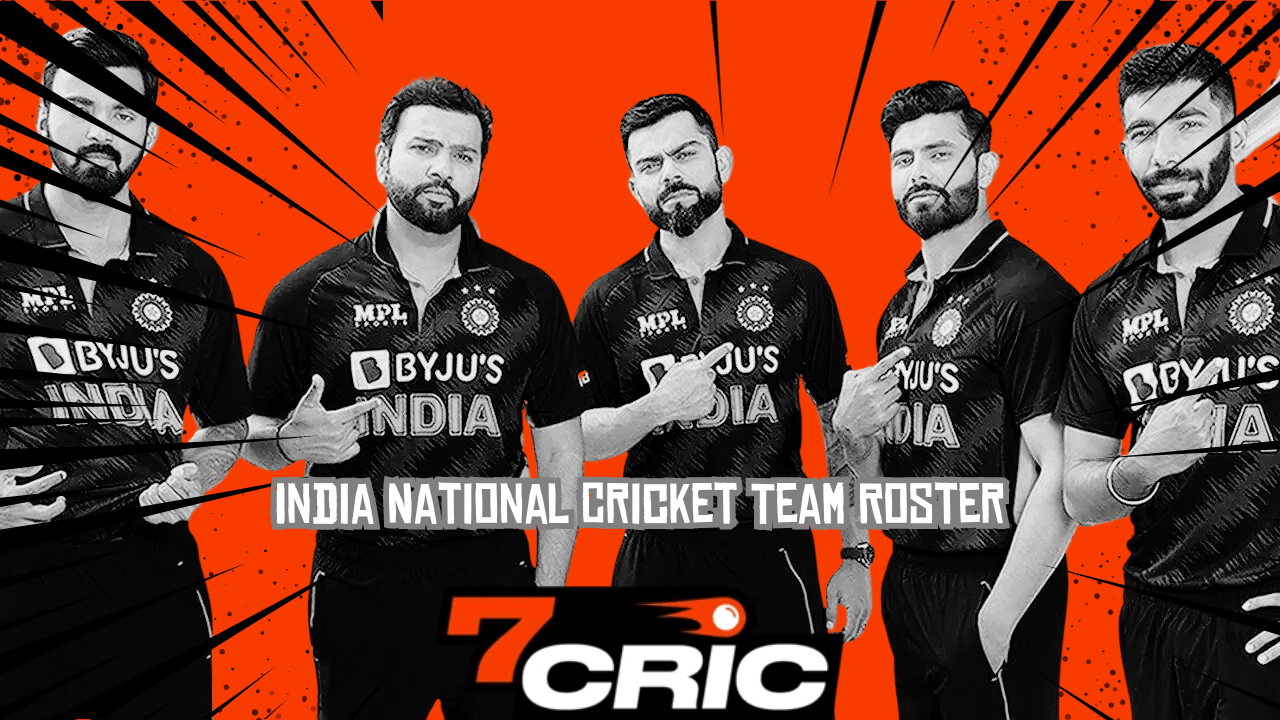In cricket, the term “anchor” refers to a batsman’s role within the team, rather than a specific technique or position.
An anchor batsman is one who plays a stabilizing role during an innings, particularly in limited-overs cricket such as One Day Internationals (ODIs) and Twenty20 (T20) matches.
The anchor’s role is to bat through a significant part of the innings, maintaining a steady scoring rate without taking undue risks.
This allows other, more aggressive batsmen to play around them, knowing that there is a reliable player at the other end who can keep the innings together.
An anchor batsman often has excellent defensive techniques, a wide range of scoring shots, and the ability to read the game situation well.
They are adept at rotating the strike and keeping the scoreboard ticking over, and they can accelerate their scoring rate if required.
The anchor’s role is crucial in building substantial partnerships and setting or chasing competitive totals, especially when early wickets have fallen, and the team needs to rebuild the innings.
Some of the most successful batsmen in limited-overs cricket have been known for their ability to anchor an innings, providing the foundation for their team’s success.
What is Anchor in Cricket?
An anchor in cricket refers to a player who plays a crucial role in stabilizing the batting line-up and ensuring a steady run flow.
This article aims to explore the concept of an anchor in cricket, shedding light on their responsibilities, characteristics, and impact on the game.
An anchor player is responsible for holding one end of the wicket, focusing on building partnerships and preserving wickets.
They exhibit qualities such as patience, concentration, and an ability to adapt to different game situations.
The presence of an anchor in the batting lineup can have a significant impact on the game by providing stability and allowing aggressive batsmen to play their shots freely.
Throughout cricket history, several famous anchors have left their mark with their exceptional batting skills and ability to anchor the innings.
Understanding the role of an anchor in cricket is essential in comprehending the dynamics and strategies employed by teams in this sport.
Key Takeaways
- An anchor in cricket stabilizes the batting line-up and ensures a steady run flow.
- The qualities of an anchor include patience, concentration, and adaptability.
- The presence of an anchor provides stability and allows aggressive batsmen to play freely.
- The anchor’s role is crucial in Test cricket for building a solid foundation.
The Role of an Anchor in Cricket
The role of an anchor in cricket is to provide stability and consistency to the batting line-up, acting as a reliable and dependable player who can stay at the crease for long periods of time.
An anchor is typically a top-order batsman who takes on the responsibility of holding the innings together while other batsmen play around him. This role requires a high level of technical skill, patience, and concentration.
The anchor’s primary objective is to build partnerships with other batsmen and ensure that the team avoids losing quick wickets.
By occupying the crease for extended periods, the anchor can tire out the opposition bowlers, force them to make errors, and create opportunities for the team to score runs.
This approach is particularly crucial in Test cricket, where the focus is on building a solid foundation and batting for long innings.
An anchor plays a vital role in absorbing pressure and stabilizing the team’s performance. They are adept at playing defensively, blocking deliveries, and rotating the strike to keep the scoreboard ticking.
While an anchor may not score runs at a fast pace, their presence and ability to hold one end provide the team with a sense of security and allow more aggressive batsmen to play their natural game.
In summary, the role of an anchor in cricket is essential in maintaining stability, consistency, and control in the batting line-up.
Responsibilities of an Anchor Player
The responsibilities of an anchor player in cricket include building a solid foundation for the team and holding the batting lineup together.
As an anchor, the player is expected to play a patient and composed innings, ensuring that the team does not lose too many early wickets.
They are responsible for staying at the crease for a long period, providing stability and allowing the more aggressive batsmen to play their natural game.
Building a Solid Foundation for the Team
To establish a firm basis for the team, it is crucial to create a strong foundation that can serve as an anchor in cricket.
This foundation acts as a stable platform upon which the team can build their strategy and execute their game plan. It provides stability and consistency, allowing other players to perform their roles effectively.
A solid foundation encompasses various aspects, such as technical skills, mental strength, leadership qualities, and teamwork.
Technical skills involve mastering the basic techniques of batting, bowling, and fielding, while mental strength helps players stay focused and perform under pressure.
Leadership qualities contribute to guiding the team towards success, while teamwork ensures coordination and unity among the players.
By laying a strong foundation, the anchor player plays a vital role in shaping the team’s performance and ultimately achieving victory.
| Aspects of a Solid Foundation |
|---|
| Technical Skills |
| Mental Strength |
| Leadership Qualities |
| Teamwork |
| Consistency |
Holding the Batting Lineup Together
One key aspect of maintaining a cohesive batting lineup is ensuring the integration of individual players’ strengths and roles into a unified and strategic approach.
This requires the identification of an anchor in the team, a player who possesses the ability to hold the batting lineup together.
The anchor is responsible for providing stability and consistency in the team’s performance, acting as a foundation for the other players to build upon.
To evoke an emotional response in the audience, consider the following four reasons why having an anchor is crucial:
- Reliability: The anchor’s ability to withstand pressure and deliver consistent performances instills confidence in the team and fans alike.
- Mentorship: The anchor’s experience and expertise offer invaluable guidance to younger, less experienced players, fostering their growth and development.
- Stability: The anchor’s presence provides stability during challenging situations, allowing the team to weather difficult periods and bounce back.
- Role model: The anchor’s exemplary work ethic and dedication serve as an inspiration for other players, encouraging them to strive for excellence.
The anchor plays a pivotal role in holding the batting lineup together, providing stability, mentorship, and inspiration to the team.
Characteristics of a Good Anchor
Characteristics necessary for a good anchor include a strong defensive technique, disciplined shot selection, and the ability to patiently build an innings.
A good anchor is known for their ability to withstand the pressure of the opposition’s bowling attack and provide stability to the batting lineup.
They have a solid defensive technique, which allows them to block or defend deliveries effectively, minimizing the risk of getting out.
Additionally, a good anchor possesses disciplined shot selection, carefully choosing which deliveries to attack and which ones to leave or defend. This ensures that they do not play rash shots that could result in their dismissal.
Furthermore, a good anchor has the ability to patiently build an innings. They understand the importance of occupying the crease for long periods, wearing down the bowlers and gradually accumulating runs.
They are willing to grind it out, even during difficult phases of the game, in order to set a solid foundation for their team.
Patience is a key attribute of a good anchor, as they are able to resist the temptation to score quickly and instead focus on occupying the crease and frustrating the opposition.
A good anchor in cricket possesses a strong defensive technique, disciplined shot selection, and the ability to patiently build an innings. These characteristics enable them to hold the batting lineup together and provide stability to the team.
Impact of an Anchor on the Game
A good anchor in cricket possesses several characteristics that contribute to their effectiveness in the game. Now let’s shift our focus to the impact an anchor can have on the overall outcome of the match.
An anchor’s ability to stabilize the batting order and provide a solid foundation is crucial. They play a pivotal role in ensuring that the team’s innings does not collapse under pressure.
Here are some key ways in which an anchor can influence the game:
- Consistency: An anchor’s primary objective is to score runs steadily and consistently. This helps in building a solid total for the team and puts pressure on the opposition.
- Partnership building: Anchors often form long partnerships with other batsmen, providing stability and allowing more aggressive players to take risks.
- Batting time: Anchors are known for their ability to occupy the crease for long periods. This not only frustrates the opposition but also ensures that the team’s total keeps growing.
- Psychological advantage: The presence of a reliable anchor in the team can boost the morale of the entire batting lineup, instilling confidence and stability.
An anchor’s impact on the game extends beyond their personal performance. Their ability to stabilize the innings, build partnerships, occupy the crease, and provide a psychological advantage makes them a valuable asset to any cricket team.
Famous Anchors in Cricket History
Renowned figures in the annals of cricket history, these influential players have left an indelible mark on the game with their exceptional ability to stabilize the batting order and provide a solid foundation for their teams.
One such famous anchor is Rahul Dravid, widely recognized for his impeccable technique and resilience.
Dravid’s unwavering focus and immense patience allowed him to occupy the crease for long periods, frustrating opposition bowlers and wearing them down.
His ability to absorb pressure and bat for extended periods of time made him an invaluable asset to the Indian cricket team.
Another legendary anchor is Alastair Cook, the highest run-scorer for England in Test cricket. Cook’s remarkable concentration and discipline enabled him to bat for long durations and bat out entire sessions, wearing down the opposition’s bowling attack.
His ability to occupy the crease and build partnerships with teammates was crucial to England’s success in Test matches.
In addition, Shivnarine Chanderpaul, known for his unorthodox batting stance, was a key anchor for the West Indies team.
Chanderpaul’s ability to counterattack when required and bat for long periods of time made him a formidable force in Test cricket.
These famous anchors in cricket history showcased the importance of stability and resilience in the game.
Their ability to provide a solid foundation for their teams and stabilize the batting order played a significant role in their respective teams’ success.
Wrapping Up: Anchor in Cricket
The role of an anchor in cricket is crucial as they provide stability and consistency to the team’s batting lineup.
They are responsible for staying at the crease for extended periods and building partnerships with other players. A good anchor possesses traits like patience, discipline, and a solid defensive technique.
Their impact on the game is significant, as they can steady the team during challenging situations and set up a platform for aggressive batsmen to build upon. Some famous anchors in cricket history include Rahul Dravid, Alastair Cook, and Cheteshwar Pujara.
In conclusion, the anchor in cricket plays a vital role by providing stability and consistency to the team’s batting lineup.
Their responsibility is to stay at the crease for extended periods, build partnerships, and anchor the innings.
Possessing traits like patience, discipline, and a solid defensive technique, a good anchor can have a significant impact on the game by steadying the team during tough situations.
Famous anchors in cricket history include Rahul Dravid, Alastair Cook, and Cheteshwar Pujara.
Frequently Asked Questions About Anchor in Cricket
How does an anchor player affect the team's batting strategy in cricket?
An anchor player in cricket impacts the team's batting strategy by providing stability and consistency. They play a defensive role, focusing on preserving wickets and building partnerships, ensuring a solid foundation for the team's innings.
What are some key qualities or skills that make a player suitable for the anchor role in cricket?
Key qualities and skills that make a player suitable for the anchor role in cricket include strong defensive techniques, patience, the ability to occupy the crease for long periods, good judgment of run-scoring opportunities, and the capacity to handle pressure situations effectively.
Can an anchor player also be an effective leader or captain for their team?
Yes, an anchor player can also be an effective leader or captain for their team. Their ability to stay at the crease for long periods, display resilience, make tactical decisions, and lead by example can make them well-suited for the role.
How does the presence of an anchor player influence the opposition's bowling tactics?
The presence of an anchor player in cricket influences the opposition's bowling tactics by requiring them to develop strategies to neutralize the anchor's ability to score consistently and hold the innings together.
Are there any notable instances in cricket history where an anchor player's performance completely turned the game around for their team?
Notable instances in cricket history where an anchor player's performance completely turned the game around for their team include Rahul Dravid's innings of 180 against Australia in 2001 and Brian Lara's 153 against Australia in 1999.











